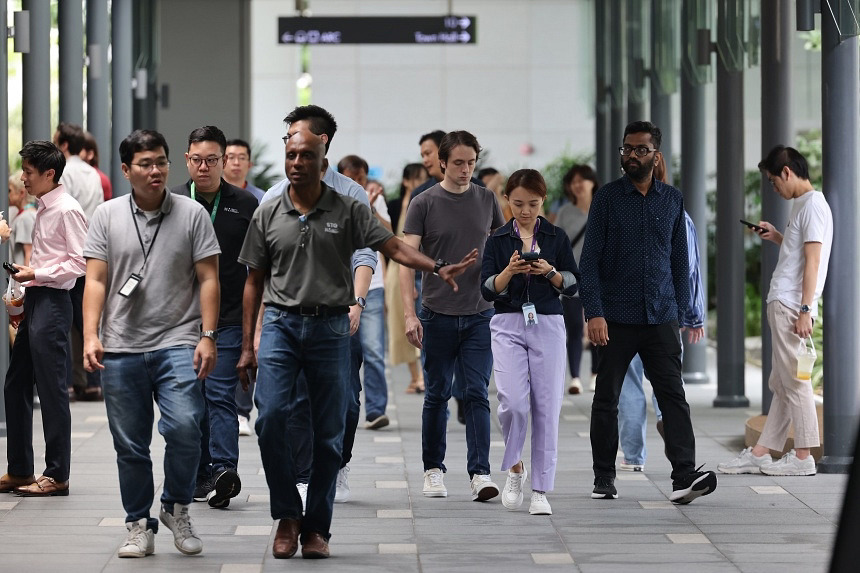S’pore employment outlook for Q1 positive but slightly weaker than a year ago: Survey

(Photo credit: ST Photo/Jason Quah)
Source: The Straits Times
Employers here are cautiously optimistic about their hiring plans in the new year, with the transport, logistics and automotive sector especially eager to hire amid burgeoning global demand.
The net employment outlook for that sector notched a record high of 67 per cent, according to results released on Dec 9 from the latest quarterly survey conducted by recruitment firm ManpowerGroup.
Net employment outlook is a measure of hiring optimism, defined as the percentage of companies surveyed that intend to take on new staff, minus the percentage that intend to downsize, in the upcoming quarter.
A total of 525 employers were polled here in October on their headcount expectations for the first three months of 2025.
Across the overall economy, 45 per cent of employers polled reported plans to hire in the first quarter of 2025, 20 per cent indicated intentions to lower staffing levels, while 34 per cent did not expect any change.
ManpowerGroup said the overall net employment outlook after seasonal adjustment stands at 25 per cent, down 4 percentage points from the quarter before, as well as the same quarter a year back.
Ms Linda Teo, country manager at ManpowerGroup Singapore, said:
“Despite a slight slowdown in hiring intentions from the previous quarter, the local labour market remains resilient, serving as a source of stability and consistency during these uncertain times. Given that the survey was conducted in October 2024, just before the US presidential elections, employers are likely practising cautious optimism.”
Meanwhile, the standout 67 per cent figure for the transport, logistics and automotive sector is up 22 percentage points from the quarter before and 26 percentage points from the first quarter of 2024.
This places Singapore first among 42 markets globally for the sector, exceeding the global average by 43 percentage points. It is the highest level recorded in the sector here since tracking began in the first quarter of 2010.
Ms Teo noted that Singapore’s role as a safe and reliable hub in Asia is becoming increasingly important amid global geopolitical tensions and uncertainties.
The shifts in trade routes arising from geopolitical concerns as well as the resurgence of shipments transiting Singapore are expected to drive job creation in the transport, logistics and automotive sector, she added.
Employers in eight of nine sectors polled expect to increase headcount.
Only the energy and utilities sector posted a negative net outlook, at minus 29 per cent, improving by 1 percentage point from the quarter before.
Meanwhile, healthcare and life sciences, financials and real estate, and consumer goods and services posted robust net outlooks of above 30 per cent.
In the middle of the pack was the communication services sector with a net outlook of 29 per cent, followed closely behind by information technology at 28 per cent.
The net outlook for industrials and materials came in at 14 per cent, while that of “other” sectors beyond the eight was 10 per cent.
This includes the government or public service; non-profits, non-governmental organisations, religious organisations or charities; and educational institutions.
Larger firms generally tended to post more positive net outlooks, except for large enterprises with 5,000 or more employees. Micro enterprises with under 10 employees also tended to post more positive outlooks.
Firms with 1,000 to 4,999 employees posted a net outlook of 48 per cent, the most positive compared with firms of other sizes.
Globally, the net outlook for the coming first quarter clocked in at 25 per cent too, holding steady from the quarter prior, and down 1 percentage point from the same period a year ago.
India topped the list among the 42 markets covered by the survey with a net outlook of 40 per cent.
Across the nine sectors, at a global level, information technology had the highest net outlook of 37 per cent. The financials and real estate sector followed closely behind at 33 per cent.
